type of overhead crane
Date: 2022-08-18 10:35:42 Source: Weihua Crane
An overhead crane is a large and powerful machine that is used to move heavy objects around a factory or construction site. There are several different types of overhead crane, each with its own unique set of features. choosing the right overhead crane for the job is essential for safety and efficiency.
I. Types Of Overhead Cranes
Overhead cranes are classified into two main categories: bridge and gantry.
Bridge cranes travel horizontally along rails that are attached to the ceiling or upper supports of the building. The bridge crane consists of three major components, including the bridge, trolley, and hoist.
Gantry cranes are similar to bridge cranes, but they have a beam that runs along the ground instead of along the ceiling or upper supports. Gantry cranes are used when the application requires a crane to travel along a rail, but there is no upper support structure to mount the crane on.
Both bridge and gantry cranes can be further classified into different types, depending on their application and design. The most common types of overhead cranes include:
-Cantilever gantry crane: These cranes have a horizontal beam that projects out from one side of the crane. The arm is used to support the trolley and hoist, and the trolley and hoist run along the horizontal beam. Cantilever gantry cranes are used for applications where the crane needs to travel along a rail, but there is no structure on one side to support the arm of the crane.
-Semi-gantry crane: These cranes have a beam that is supported at one end by the crane frame and at the other end by an A-frame. The A-frame is generally installed on the side of the building or on a separate support structure. Semi-gantry cranes are used in applications where the crane needs to travel along a rail, but there is no structure on one side to support the arm of the crane.
-
A. Bridge Crane
A bridge crane is a crane that straddles an obstruction, allowing it to pick up and move heavy objects with ease. Bridge cranes are commonly used in factories and warehouses, where they can be used to move large pieces of machinery or heavy loads of raw materials.
B. Gantry Crane
B. Gantry cranes are a type of crane used to move heavy loads along a set path. They are commonly used in ports and other industrial settings. Gantry cranes have a variety of advantages, including the ability to move heavy loads quickly and efficiently.
C. Jib Crane
A jib crane is a type of crane that consists of a horizontal beam, or jib, that is supported at one end by a pivot and at the other end by a winch. The jib can be rotated in a horizontal plane and can be used to lift and move heavy objects.
Jib cranes are commonly used in construction and industrial settings where heavy objects need to be moved into place. They are also used in shipyards, docks, and other locations where heavy objects need to be lifted and moved. Jib cranes can be used to move objects horizontally or vertically, and can be used to lift objects up to and over obstacles.
Jib cranes are available in a variety of sizes and configurations, and can be custom-designed to meet the specific needs of your application. Jib cranes can be floor-mounted, wall-mounted, or pillar-mounted, and can be operated manually or electrically.
If you need to move heavy objects in your construction or industrial setting, a jib crane may be the perfect solution. Contact a jib crane supplier to discuss your specific needs and find the perfect crane for your application.
D. Hoist
If you're looking for a workout that will really get your heart pumping, look no further than the hoist. This challenging exercise is perfect for those who want to push themselves to the limit.
The hoist requires you to lift your entire body weight up and over a bar, using only your arms. It's a tough move to master, but once you do you'll be amazed at the strength and endurance it builds.
So if you're ready to take your workout to the next level, give the hoist a try!
Ii. How Overhead Cranes Work
An overhead crane is a type of crane that is commonly used in industrial and construction settings. Overhead cranes are suspended from a beam or other support, and are used to move heavy loads horizontally. These cranes typically have a hoist that is used to lift and lower the load, and a trolley that allows the load to be moved along the beam.
Overhead cranes are very versatile and can be used for a variety of tasks, such as lifting and moving heavy machinery, transporting materials, and even assembling large structures. One of the main benefits of using an overhead crane is that it can help to improve productivity and efficiency in the workplace. Additionally, overhead cranes can help to improve safety in the workplace by reducing the need for workers to lift heavy objects by hand.
A. The Bridge
The Bridge is a iconic structure that has been around for centuries. It is a beautiful and unique work of art that is a must see for anyone visiting the city. The history of the bridge is just as interesting as the structure itself. The Bridge was built in 1887 and is one of the oldest bridges in the city. It was originally built as a toll bridge, but is now open to the public for free. The views from the bridge are stunning, and it is a great place to take a walk or take in the sights of the city.
B. The Trolley
There are few things as iconic as the trolley. Whether you're in San Francisco or Philadelphia, trolleys are a symbol of public transportation. But have you ever wondered how they work?
Trolleys are actually pretty simple. They run on electricity, which is provided by a third rail that runs alongside the track. The electricity powers a motor, which turns the wheels and propels the trolley forward.
There are a few things that make trolleys unique. For one, they're one of the few vehicles that can run on both street track and streetcar track. They're also able to negotiate tight turns, which is why they're often used in city centres.
If you're ever in a city with a trolley system, be sure to take a ride! They're a fun and efficient way to get around.
C. The Hoist
If you're in the market for a hoist, there are a few things you'll want to keep in mind. First, think about the capacity you'll need. How much weight will you be lifting? Make sure to choose a hoist that can handle that amount of weight. Second, consider the lift height. How high do you need to lift the object? Again, make sure your hoist can handle that. Third, think about the power source. What type of power do you have available? Electric, air, or manual? Choose the right hoist for your needs. fourth, take a look at the features. What type of features do you need? For example, do you need a wireless remote? Make sure to choose a hoist that has the features you need. fifth, consider the price. Hoists can range in price, so be sure to choose one that fits your budget. With these things in mind, you'll be sure to choose the right hoist for your needs.
Iii. Advantages And Disadvantages Of Overhead Cranes
There are many advantages and disadvantages of overhead cranes. Some of the advantages include: they are very versatile, they can be used in a variety of applications, and they are relatively easy to operate. Some of the disadvantages include: they can be expensive to purchase and maintain, and they can be dangerous if not used properly.
A. Advantages
There are many advantages to living in a densely populated city. For one, there are more job opportunities. This means that you are more likely to find a job that suits your skillset and interests. There are also more transportation options, so you can get around more easily. Additionally, there are more entertainment and dining options in a city, so you can always find something to do.
Another advantage of living in a city is that you are surrounded by people from all walks of life. This can help you to become more open-minded and tolerant of others. Additionally, you have the opportunity to meet new people and make new friends. You may also find that you have more in common with people who live in a city than you previously thought.
Overall, there are many advantages to living in a city. If you are considering a move to a city, weigh the pros and cons to see if it is the right decision for you.
B. Disadvantages
There are a few potential disadvantages to using B.
First, B is a relativelynew technology, which means that there is not a lot of information available about it yet. This can make it difficult to find resources and support if you run into problems.
Second, B is not currently widely used, which means that there may not be as many people familiar with it as with other technologies. This can make it harder to find help and collaboration when needed.
Third, B can be more difficult to learn than some other technologies, due to its complexity. This can make it less accessible for some users, and can also lead to a higher learning curve.
Overall, B has some potential disadvantages that should be considered before using it for a project. However, it is also a powerful and flexible technology that offers many potential benefits.
There are different types of overhead cranes, each with its own advantages and disadvantages. Choose the type that is best suited to your needs.
FAQs About type of overhead crane
1. What are the different types of overhead cranes?
1.
There are many different types of overhead cranes, each with its own unique set of features and capabilities. The most common types of overhead cranes are gantry cranes, jib cranes, and bridge cranes.
Gantry cranes are commonly used in outdoor applications, as they are capable of span large distances and can be erected on uneven terrain. Jib cranes are ideal for indoor use, as they have a smaller footprint and can be mounted on walls or ceilings. Bridge cranes are the most versatile type of overhead crane, as they can be used indoors or outdoors and can span large distances.
2. What are the benefits of using an overhead crane?
An overhead crane is a piece of equipment that can be used to lift and move heavy loads. They are commonly used in factories and warehouses, as they can help to improve productivity and efficiency. There are many benefits to using an overhead crane, which include:
1. Increased Productivity
An overhead crane can help to increase productivity as it can be used to move heavy loads quickly and easily. This can help to improve the flow of work and reduce bottlenecks.
2. Reduced Risk of Injury
An overhead crane can help to reduce the risk of injury as it eliminates the need for workers to lift heavy loads manually. This can help to create a safer working environment.
3. Improved Efficiency
An overhead crane can help to improve efficiency as it can be used to move loads around quickly and easily. This can help to save time and improve workflow.
4. Reduced Costs
An overhead crane can help to reduce costs as it can help to improve productivity and efficiency. This can help to save money on labour costs and improve the bottom line.
5. Increased Flexibility
An overhead crane can offer increased flexibility as it can be used to move loads to different areas quickly and easily. This can be helpful when working in a fast-paced environment.
Overall, there are many benefits to using an overhead crane. They can help to increase productivity, efficiency and safety while also reducing costs. If you are looking to improve your workplace, then an overhead crane may be the right solution for you.
3. What are the factors to consider when choosing an overhead crane?
There are many factors to consider when choosing an overhead crane, such as the type of crane, the capacity, the span, the duty cycle, and the environment. The type of crane is important because it determines the size and shape of the crane, as well as the type of loads it can carry. The capacity is important because it determines how much weight the crane can lift. The span is important because it determines how far the crane can reach. The duty cycle is important because it determines how often the crane can be used. The environment is important because it can affect the performance of the crane.
4. How do you install an overhead crane?
Overhead cranes are a vital piece of equipment in many industrial and construction settings. They allow for the safe and efficient lifting of heavy loads, and can be used for a variety of tasks. If you're in need of an overhead crane, here's a quick guide on how to install one.
First, you'll need to select a location for your crane. It's important to choose a spot that is level and has enough clearance for the crane to operate safely. Once you've found a suitable location, you can begin the installation process.
To start, you'll need to set the crane's base on leveled ground. Once the base is in place, you can begin attaching the crane's main beam. This beam will support the weight of the crane's load, so it's important to make sure it is properly secured.
After the main beam is in place, you can attach the crane's hoist. The hoist is what will actually lift and lower the load, so it's important to make sure it is properly installed. Once the hoist is in place, you can attach the crane's trolley.
The trolley is what allows the crane to move side to side, and is what will be used to position the load. Once the trolley is in place, you can attach the crane's control panel. This panel will be used to operate the crane, so make sure it is easily accessible.
And that's it! With the control panel in place, your overhead crane is now ready for use.
5. How do you operate an overhead crane?
If you're wondering how to operate an overhead crane, you're not alone. Many people are unsure of the proper steps to take when using this type of crane. Here are a few tips to help you get started:
1. Before using the crane, be sure to inspect it for any damage or defects.
2. When operating the crane, always use proper hand signals to communicate with the operator.
3. Be aware of your surroundings and take precautions to avoid injuring yourself or others.
4. Never exceed the crane's weight limit.
5. When finished using the crane, be sure to lower it slowly and carefully.
By following these tips, you can help ensure a safe and successful experience when operating an overhead crane.
6.what type of crane is mounted between two overhead runways?
When it comes to cranes, there are many different types to choose from. But if you're looking for a crane to be mounted between two overhead runways, then you'll want to choose a type of crane known as a gantry crane.
Gantry cranes are commonly used in shipyards and ports for loading and unloading large vessels. They are also often used in construction and manufacturing settings for moving heavy materials. These cranes typically have a span of anywhere from 50 to several hundred feet, and can lift weights of several tons.
If you need a crane to be mounted between two overhead runways, then a gantry crane is likely the best option. These cranes are built to handle heavy loads and can span large distances, making them perfect for many different applications.
Previous: turbine hall cranes
Next: under running cranes
NEWS
- Weihua Signed Cooperation Agreement with Anyang Iron and Steel Group Co., Ltd
- How do I choose the right overhead crane?
- Egypt Elsewedy Project Launched Successfully
- Weihua Equipment for Bulk Material Handling Projects
- Weihua Hold China Crane Machinery International Cooperation Development Summit Forum 2019
- Weihua Mobile Roof Panel Machine Export to Cambodia
- Weihua Participates Vertical Garage and Smart Parking Service Exhibition
- Weihua Crane Helps SRTO Project Officially Launched



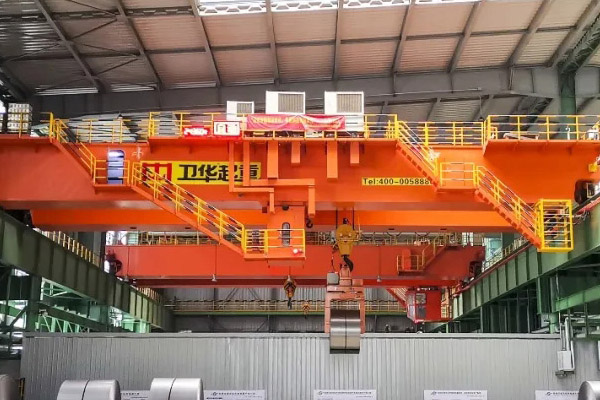
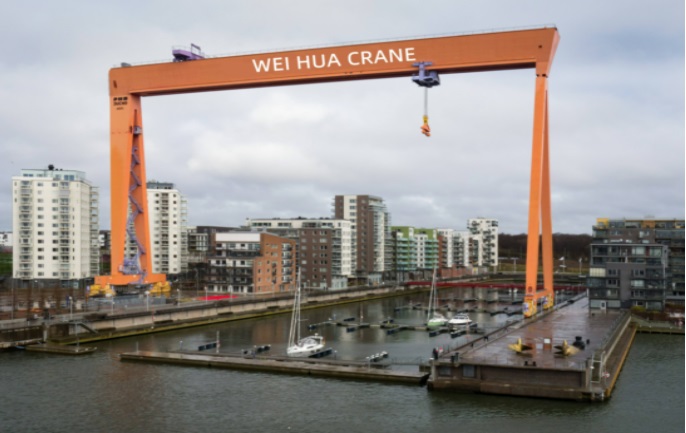
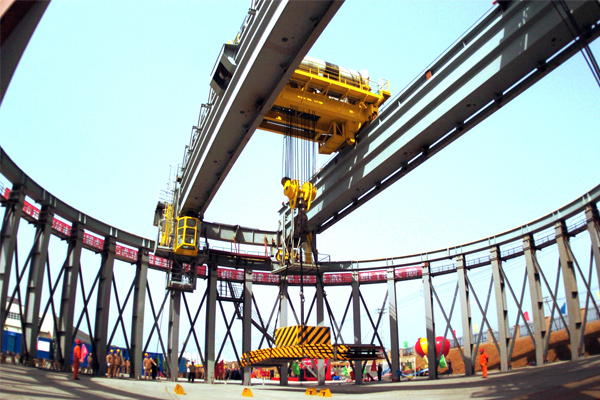
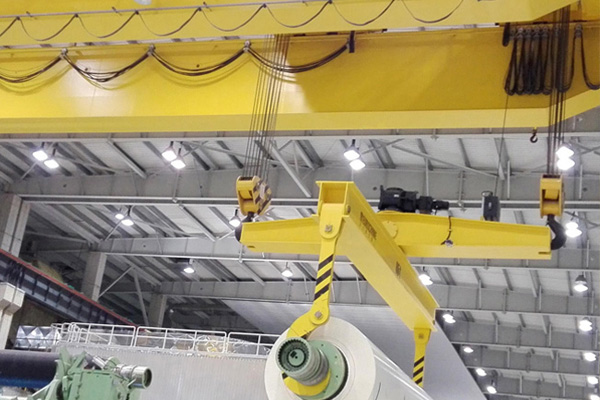
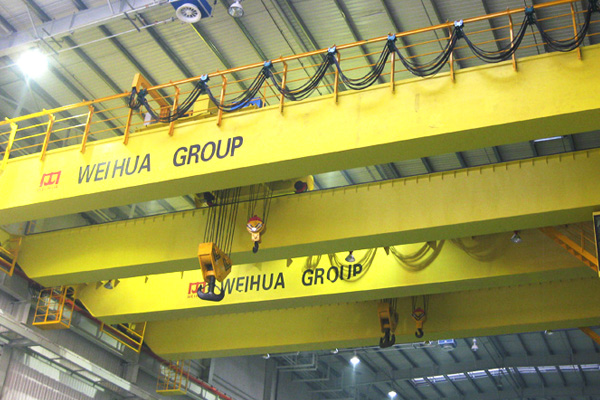
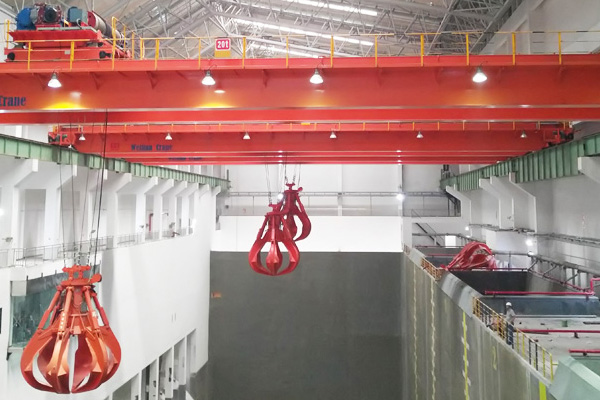
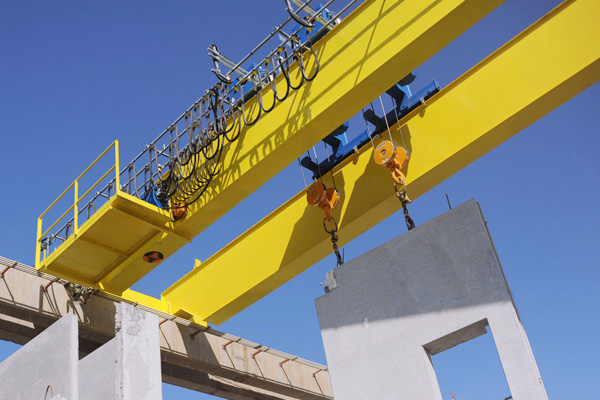

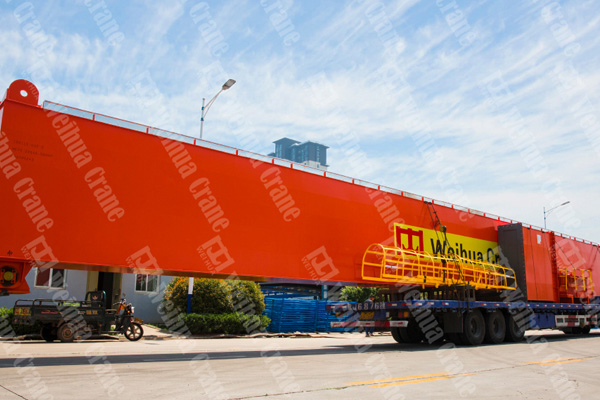
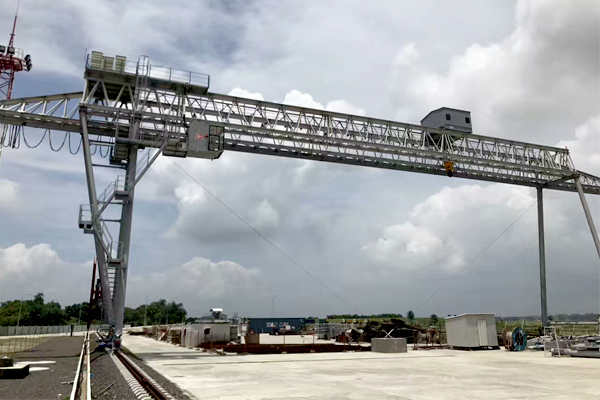
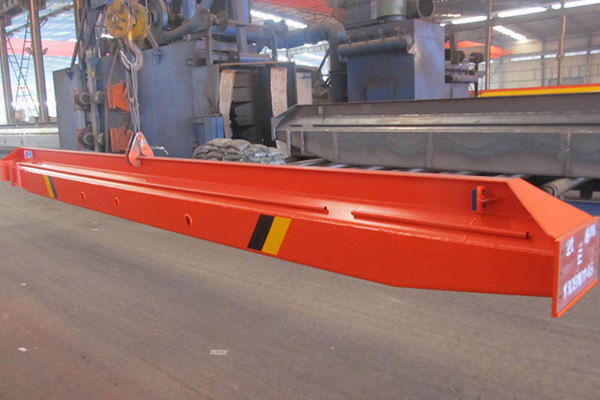
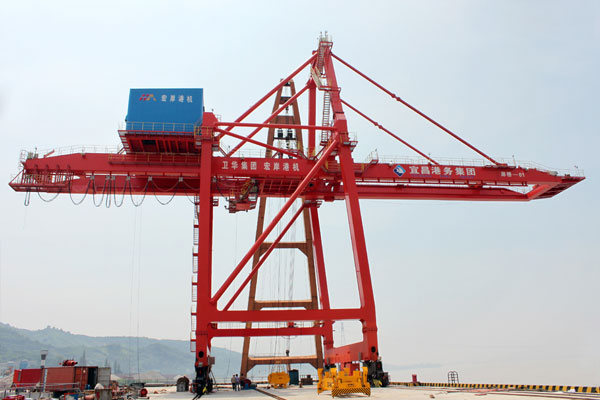
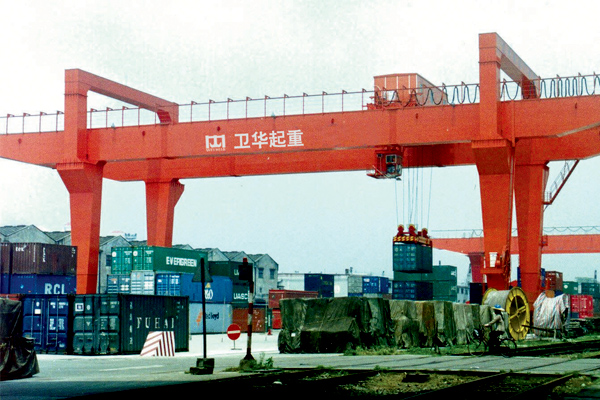
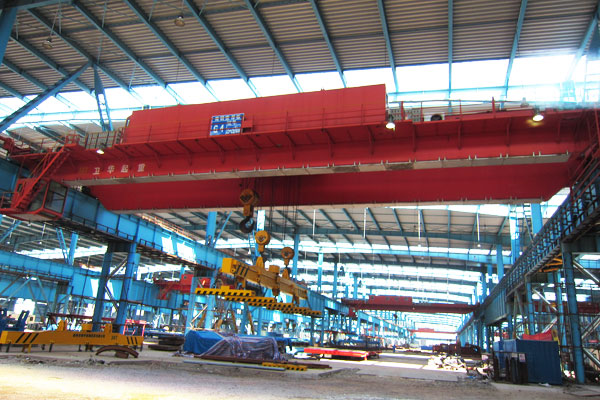

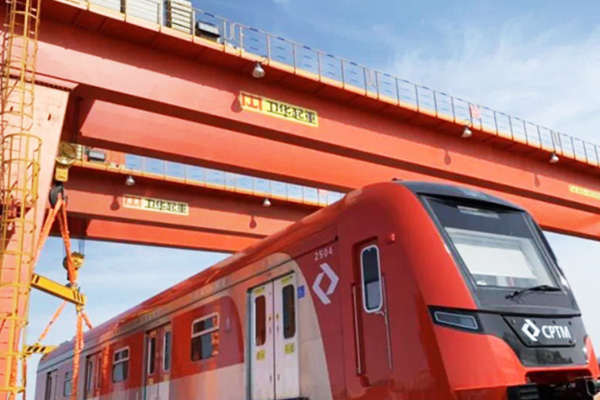



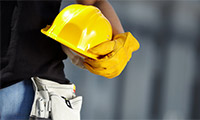





 WhatsApp
WhatsApp Get Quote
Get Quote